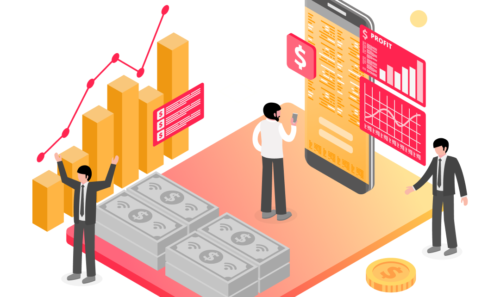Direct Sales vs Open Market: How and Why These Two Sales Strategies Should Be Aligned
Having worked on both the buy-side and sell-side of the Programmatic ecosystem, I was involved in buying impressions and selling them; and made recourse to various transaction types for this purpose. The perspective of these two aspects of the market is significantly different, and the achievable goals seem to be at odds with one another. If you want to be a successful Publisher and maximise the yield from your impressions, you need to put a sales strategy in place that will include Direct campaigns, Programmatic deals and the Open Market.
The goal for the buyer is straightforward: to buy the most relevant impressions for the lowest possible price. Most buyers don’t care if the impressions have been bought through the Open Auction, a preferred deal or Programmatic guaranteed deals. At the end of the day, the agencies exist to make money, so if your inventory is valuable for them, they will pay the right price for it.
Direct Sales vs Open Market: Achieving the right price

From the Publisher’s perspective, it is important to make the most money possible, but also to sell as few impressions as possible. Ads bother users, and if we can make the same amount of money by selling fewer impressions, we definitely should do so. So we don’t want to maximise the fill rate just for the sake of it, especially if it drives our prices lower. This means that we need to have an Open Market sales strategy in place.
But that’s not the only reason to do so. If you ever want to encourage buyers to spend more money in Direct Sales, or through Programmatic deals, you need to make sure that it will be more, and not less, profitable for them.
When managing campaigns, I used deals extensively. Well… at least I tried to. I always believed that deals should provide me with more value, with the chance of buying better impressions, but obviously for a higher price. But whenever I asked a Publisher to set me up with a deal, and I assigned it to the campaign, in most cases the deal did not come up to my expectations.
When my campaigns were supposed to deliver for the Advertiser high quality clicks and visitors, I was able to deliver the right result; but I usually ended up paying for the impressions less, in one case roughly 200 times less. Yes, that’s not a typo — I paid two hundred times less for the impressions on the Open Exchange than on one particular deal that involved large formats. It’s true that this deal provided me with a really high CTR, but I was always able to buy more impressions (and clicks) when I used the Open Exchange, even though it gave me CTR that was fifty times lower. Still, each click was roughly four times cheaper.
Eventually, I kept the deal in the campaign as well, for the additional benefit of building brand recognition; but if I ever wanted to maximise the number of clicks, I would get rid of the deal and spend all the money I had on the Open Exchange.
Cheap impressions on the Open Auction

The Open Auction is the last link in the Programmatic-Direct food chain as it has the lowest possible priority. This means that the impressions that are left on this level are of a worse quality; as the better ones were chosen by the campaigns that had higher priorities.
Because of that, the average prices on the Open Auction (on well-developed, mature websites) will be lower than what you can make using Direct Sales or Programmatic deals.
But you need to put a limit on the CPM rates your inventory is available. If you don’t do so, the prices will be driven lower, and will continue spirally downwards.
One of the most important reasons for this fact is the feature of bid shading, which makes the DSP constantly try to bid lower and lower in order to minimize the CPMs paid for the impressions. If you do not counteract this by setting up the right price floors, your inventory value, in the long run, will decrease significantly.
And if it does decrease, it will be more difficult than ever to sell Direct campaigns or Programmatic deals; that should be priced higher.
The correct holistic approach

Taking all of the above-mentioned issues into consideration, we suggest that Publishers maintain a holistic, standardized approach to selling the impressions through all the channels. Simply speaking: the higher the quality and value of the impressions, the higher the price should be. A buyer should not be able to buy the same impressions several times cheaper on the Open Exchange than when making recourse to a deal.
Depending on the level of development, you can start building this strategy from two perspectives.
If you don’t have anything, try to determine the real value of your inventory based on the CPM rates which you’re achieving on the Open Exchange, and build on that. Each transaction type that has a higher priority and provides some extra value (like, say, having access to larger ad formats than those permitted for the Open Market) should have a higher price.
If you already have a Direct Sales strategy in place, you should change the deal prices and Open Market floor prices in order to match it: not so as to be exactly on the same level, obviously, but so as to find the right balance between the high fill rate and high CPMs.
And as a side note, it’s always wise to take a look at what your competitors are doing. You won’t be able to succeed with a sales strategy if a buyer can achieve exactly the same value (buy impressions of a comparable quality (viewability and so on) generated by similar, or even the same people) at lower prices. We at Yieldbird have developed a dedicated product for conducting such an analysis, and we shall keep you abreast of all developments in the weeks and months to come.







